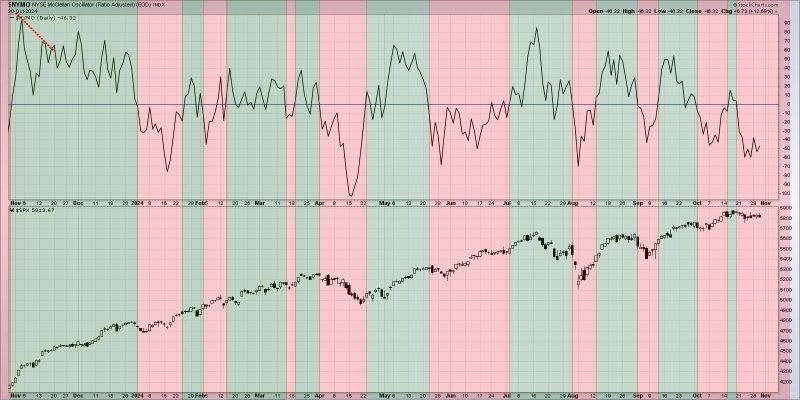Breadth Divergences: Understanding Their Impact on Market Trends
Market participants often rely on a variety of technical indicators and tools to gauge the health of financial markets and anticipate potential shifts in direction. One such indicator that has garnered attention is breadth divergence. By analyzing the breadth of a market, investors can gain valuable insights into the underlying strength or weakness of a trend.
What is Breadth Divergence?
Breadth divergence refers to a situation where the overall market index is moving in one direction, while a broad range of individual stocks within that index are moving in the opposite direction. This phenomenon highlights a disparity between the performance of the index as a whole and the underlying components that make up the index.
Interpreting Breadth Divergences
When breadth divergences occur, it can serve as a warning sign for investors and traders. The discrepancy between the market index and individual stocks suggests underlying weaknesses or strengths that may not be immediately apparent. If a market index is reaching new highs, but a large number of stocks within the index are declining, it may indicate that the market rally lacks broad-based support and is being driven by a handful of outperforming stocks.
Conversely, if a market index is experiencing a pullback or correction, but a significant number of individual stocks are still trending upwards, it could signal that the overall market sentiment remains positive and that the correction may be short-lived.
Implications for the Bull Market
In the current market environment characterized by a prolonged bull run, breadth divergences have become a topic of interest among investors. As major indices continue to reach new highs, some market observers have raised concerns about the sustainability of the rally, especially when breadth divergences start to emerge.
The presence of breadth divergences during a bull market could potentially signal a weakening of market breadth and participation. If a small group of stocks is driving the majority of the gains while a significant portion of stocks are underperforming, it could indicate that market breadth is narrowing, and the rally may be losing momentum.
Investors should pay close attention to breadth divergences and monitor how they evolve over time. While breadth divergences alone may not signal the end of a bull market, they can provide valuable insights into the underlying dynamics of the market and help investors make informed decisions about their portfolios.
Final Thoughts
Breadth divergences are a valuable tool for investors to assess market strength and identify potential shifts in market trends. By analyzing the breadth of a market index and individual stocks, investors can gain a deeper understanding of market dynamics and make more informed investment decisions.
As breadth divergences continue to attract attention in the financial markets, investors should remain vigilant and incorporate this indicator into their analysis. While breadth divergences may not always accurately predict market reversals, they serve as an essential tool for understanding the nuances of market behavior and navigating the complexities of investing in an ever-changing market environment.

